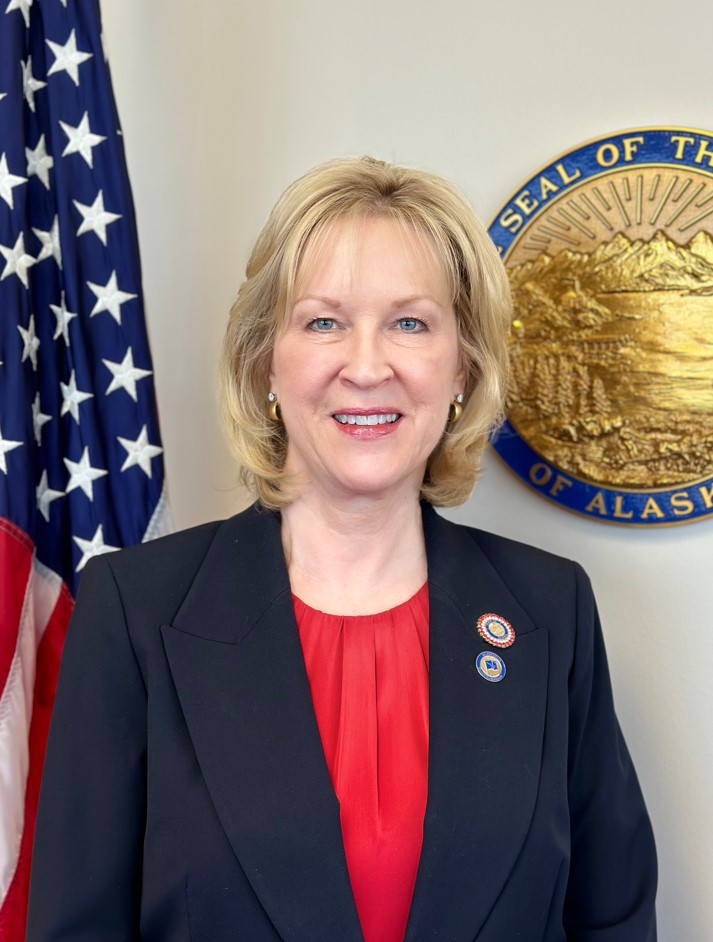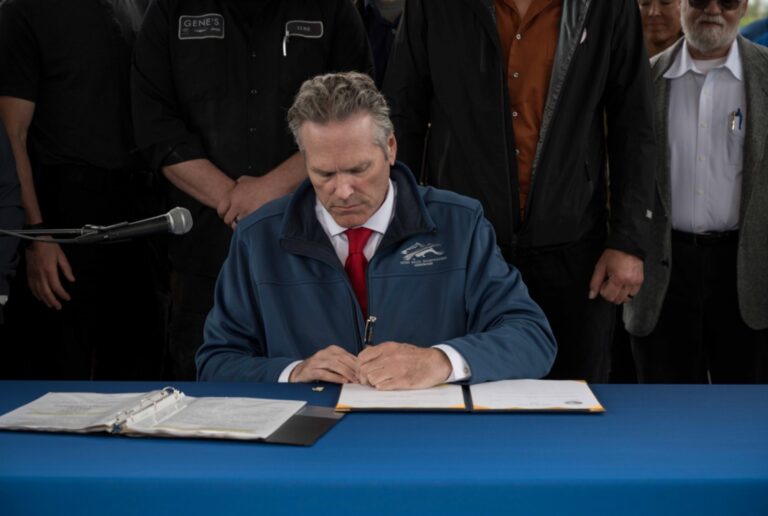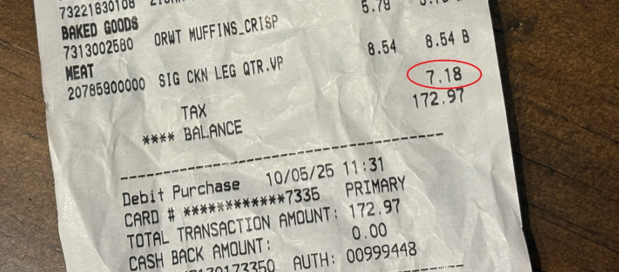The first results from Alaska’s local elections on October 7th are starting to come in as municipalities across the state tally votes for mayors, assembly members, city councils, school boards, and propositions.
Preliminary and unofficial results are being reported, with certification of official results anticipated in the upcoming weeks. Unofficial results are provided in the links below.
Fairbanks North Star Borough elected three assembly seats and two school board seats. Brett Rotermund received 9,383 votes on election night in his unopposed bid for assembly seat B. For assembly seat C, Garrett Armstrong is leading with 6,554 votes to J.T. McComas-Roe’s election night total of 4,869. For the FNSB seat I, Patrick Roach is leading with 8,163 votes to Barbara Haney’s 6,293 votes in the unofficial tally. Seats for the school board are more competitive, with Aundra Hull leading over Cemetria (Sam) Spencer with 7,446 to 6,532. Only 131 votes separate candidates for school board seat D, with Naomi Hewitt receiving 7,072 votes, closely followed by Melissa Burnett’s 6,941 election night tally. Counting will continue on October 14th, with certification to occur on October 23, 2025. Fairbanks North Star Borough with the City of Fairbanks & North Pole Oct 7 unofficial results
The City of Fairbanks appears to have elected liberal Mindy O’Neall as mayor with 1,808 votes, over the conservative incumbent Mayor David Pruhs, who received 1,528 votes on election night. City council seat C has Sue Sprinkle leading over Hannah Ekalook, 1,859 to 1,362. Crystal Tidwell ran unopposed for council seat D and received 2,672 votes. Fairbanks North Star Borough with the City of Fairbanks & North Pole Oct 7 unofficial results
North Pole has four council seats available, with David A. Skipps, Jordan Schuster, Sandra Rolfe, and David Brandt on the ballot. Fairbanks North Star Borough with the City of Fairbanks & North Pole Oct 7 unofficial results
Palmer’s mayoral race saw Mayor Jim Cooper leading with a 54-vote edge over John Alcantra’s 103 votes. Two three-year council seats are available. Alison Collins is currently leading with 231 votes. The other seat will be determined during the canvassing process, with Amanda Graham at 197 votes and Carolina Graver receiving 160 votes on election night. Sherry Carrington is a clear leader with 227 votes. Counts with be updated on October 10th, with certification scheduled for October 13th. Palmer Oct 7 unofficial results
Wasilla had one contested race for the three council seats on the ballot. Mark Schmidt received 63% of the votes on election night, leading Sue-Sue Scott 97 to 54. Final votes will be counted on October 10th. Wasilla Oct 7 unofficial results
Houston will be filling three council members. Early and absentee ballots will be tallied on October 10th. Election night votes have Jason H. Kahn, Callie J. Courtney, and Dan Lewis leading in their races. Houston Oct 7 unofficial results
Juneau has counted less than 22% of its ballots in the by-mail election for a total of 6,073 ballots as of election night. Only one assembly seat was contested, with Nathaniel “Nano” Brooks leading by 3 votes against incumbent Wade Bryson (2,743 to 2,740). Citizen-led initiative proposition 1, to cap the mill rate at 9 mills, is leading 3,104 yes to 2,920 no. Another citizen-led initiative, proposition 2, to exempt sales tax on essential foods and residential utilities is leading widely with 4,173 in support and 1,867 opposed. The municipality’s proposition 3 to establish seasonal sales tax rates is currently being rejected by the public with 3,534 votes against the proposal to 2,514 in support. Tallying will continue on October 10th, with updates to be provided on an ongoing basis until the election results are certified on October 21st. City and Borough of Juneau Oct 7 election night results
Ketchikan Gateway Borough election night results show Austin Otos clearly in the lead for mayor with 1,135 votes. In the lead for two three-year seats on the assembly are Rodney Dial and Glen Thompson with 1,166 and 1,154 votes each. Daniel Ortiz is leading for a one-year seat on the assembly with 1,045 votes. Ketchikan Gateway Borough Oct 7 unofficial results
The City of Ketchikan has two open city council seats, with Abby Bradberry leading with 567 votes and Janalee Gage following with 541 votes. Election night results indicated strong support for seven ballot propositions. These measures include a $15 million wastewater bond aimed at replacing aging sewer mains and upgrading the treatment plant. Additionally, there are six charter amendments designed to streamline ordinances, ease residency requirements for the city manager, and modernize provisions related to contracts, audits, and conflicts of interests. City of Ketchikan Oct 7th unofficial results
Haines elected Gabe Thomas and Eben Sargent as clear winners for assembly seats. The government’s seasonal sales tax proposition has passed with 562 votes in support to 515 opposed. Haines Oct 7 unofficial results
Skagway elected Mayor Orion Hanson, who ran unopposed. For two three-year assembly seats, Charity Pomeroy has 257 votes and Jay Burnham has 226 to lead over Andrew Cremata’s election night tally of 146. Dan Henry received 146 write-in votes for a one-year assembly seat. Luke Rauscher and Kerri Raia ran unopposed for school board seats. A proposition for a seasonal sales tax failed 140-222 with the canvass to occur on October 9, 2025. Skagway Oct 7 unofficial results
Wrangell elected David Powell and Dan Powers to assembly seats, who both ran unopposed. Wrangell election information
Sitka elected Katie Riley to assembly, while Thor Christianson currently leads for the second seat, surpassing Sherri Blankenship. Proposition 1, which aims to allocate recreation funding from the hospital fund, passed by a significant margin. However, proposition 2, focused on economic studies for initiatives, did not garner a majority of public support. Official results will be available following the canvass of final votes. https://www.cityofsitka.com/RegularMunicipalElection
The Kenai Peninsula Borough saw early leads that suggest a preference for shifting elections to November and opposing the hand-counting of ballots, with the Soldotna annexation also under consideration. Full results are pending the canvass. Current leaders in the assembly districts are as follows: District 1 – Kalifornsky: Scott Griebel, with 335 votes. District 3 – Nikiski: Lenora Niesen, who ran unopposed, has received 523 votes. In District 4—Soldotna, Sergeant Truesdell is leading with 405 votes. District 5 – Sterling shows Dale Eicher in the lead with 544 votes. For District 7–Central, the unopposed candidate, Michael W. Hicks, has garnered 643 votes. For more details see the unofficial results. Kenai Peninsula Borough Oct 7 unofficial results
Homer reelected incumbents Bradley Parsons, Jason Davis, and Storm Hansen to three council seats. Homer Oct 7 preliminary results
Kenai’s early results show that Henry Knackstedt has been elected mayor with 461 votes. Two seats are available for council members with, Victoria Askin with 445 votes, followed by Bridget Grieme with 402 votes on pace to fill the seats. City of Kenai Oct 7 unofficial results
Seward’s mayoral race has a clear winner, with Sue McClure receiving 260 votes on election night. Lori Draper is the apparent winner of a council seat with 215 votes. The other council seat is too close to call. with the potential of 91 votes to be counted during canvass on October 10th. Seward Oct 7 preliminary results
Kodiak Island Borough results are unofficial, with Jared Griffin leading Scott Arndt for mayor 984 to 832. Two three-year seats for the borough assembly are available, with Jeremiah Gardner a clear winner with 894 votes, followed by Jeffery A. Woods with 661. Kodiak Oct 7 unofficial results
The Aleutians East Borough voted on three assembly seats and three school board seats, with the results pending. This link will provide the official results as soon as they become available. Aleutians East official election results link
Bristol Bay Borough has two open assembly seats, with Michael Peters leading with 132 votes and a tight race for the second seat between with Robert Babiak Jr., with 97 votes, and Pete Caruso, with 87 votes, prior to final counts to occurring during canvassing. Bristol Bay Borough Oct 7 unofficial results
Dillingham has Triston Chaney leading for council seat A with 138 votes and Jean Barrett in the lead for seat B with 164 votes. Final results are pending canvassing on October 9th. Dillingham Oct 7 election night results
Lake and Peninsula Borough filled two assembly seats and two school board seats, details pending final canvassing.
Unalaska council seats A and D have unopposed candidates. Mayor Vince Tutiakoff Sr. 263 votes, and Daneen Looby garnered 241 votes. Zac Schasteen is currently leading for council seat C with 135. The race for board seat C is tight, with the candidates receiving the following percentages: John Warden 35%, Sean Peters 34%, and Megan Dean at 31%. The final canvass is schedule for October 10th. Unalaska Oct preliminary results
Whittier voted on three council seats, with results pending final vote counting scheduled for October 10th. https://www.whittieralaska.gov/elections
Bethel elected Mark Springer, Kelsi Kime, and Teresa Keller to two-year terms on the council, with write-in Greg Schiedler leading for one-year term. Final canvassing is scheduled for October 9th. Bethel general election information
Northwest Arctic Borough has one contested assembly seat on the ballot with results pending final canvass.
Nome preliminary election results show Kenny Hughes for mayor, unseating John Handeland. All other candidates were running unopposed.
Must Read Alaska will monitor the election results and provide updates on the official outcomes once they are certified. If you would like to share your thoughts on how the election results impact your community, leave a comment or reach out to [email protected]
Brenda Josephson is a board member of Alaska Gold Communications, Inc., the publisher of Must Read Alaska. You can contact her via email at [email protected].










